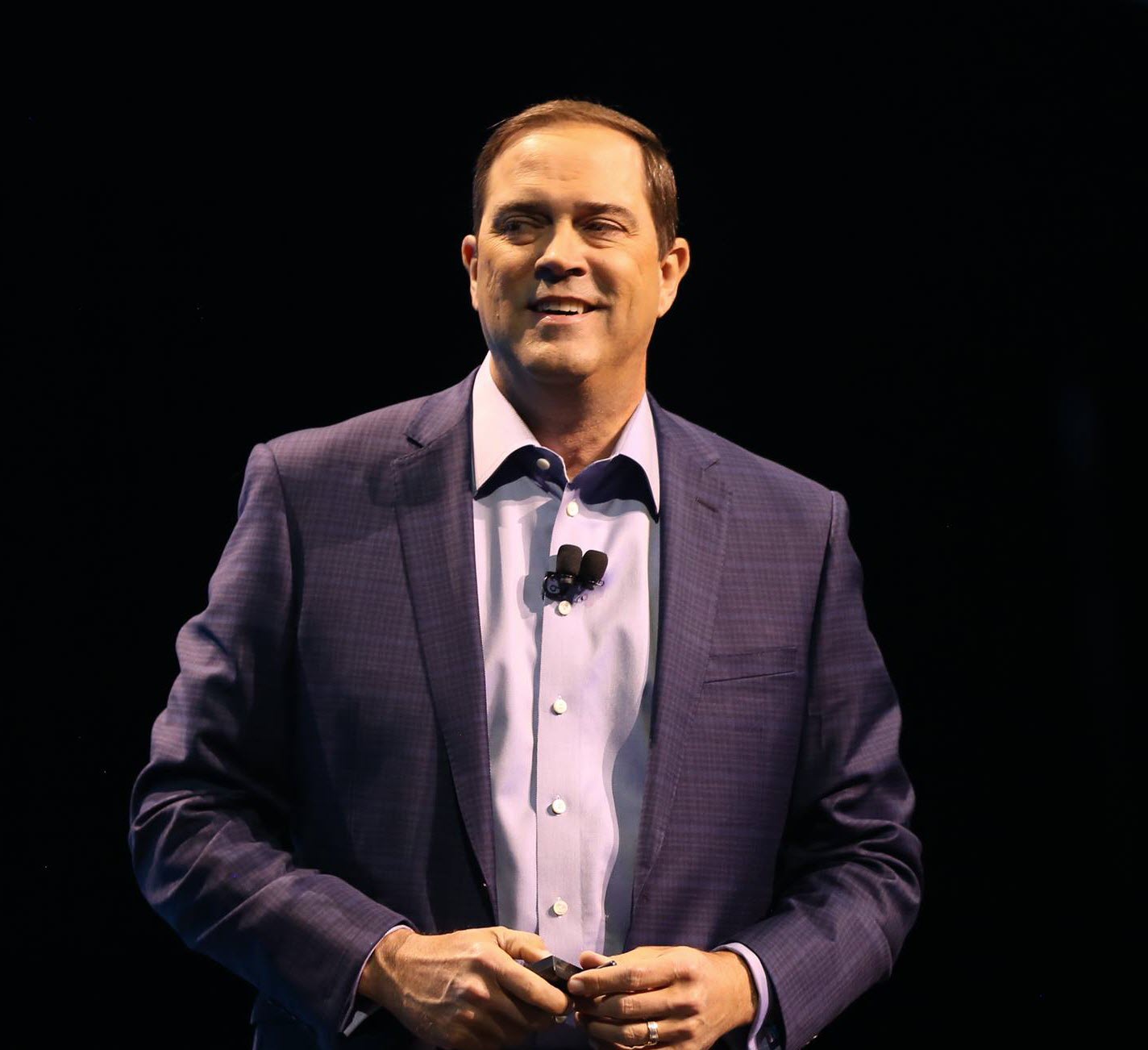 INFRA
INFRA
 INFRA
INFRA
 INFRA
INFRA
Cisco Systems Inc. logged its sixth straight quarter of revenue declines but met analyst expectations for both revenue and earnings per share. The company also said it will cut 1,100 more jobs on top of the 5,500 it eliminated last August.
The company issued cautious guidance for the fiscal fourth quarter, causing traders to knock its shares back 5 percent in after-hours trading following a generally dismal day on Wall Street.
Cisco’s third-quarter revenues of $11.9 billion were down 1 percent from the same quarter last year. Earnings per share of 60 cents slightly exceeded analyst estimates.
But significantly, Cisco said recurring revenue made up 31 percent of total revenue, up 2 percent year-over-year. The recurring revenue figure has been closely watched as Cisco is attempting to navigate a transition from hardware sales to more predictable subscription revenues.
Chief Executive Chuck Robbins (pictured) highlighted that transition in his prepared statement: “We delivered a solid quarter. We are laser-focused on delivering unparalleled value through highly secure, software-defined, automated and intelligent infrastructure.”
Robbins also noted that eight quarters ago, Cisco recorded $2 billion in subscription revenue. This quarter that figure was $4.4 billion, “and it’s accelerating rapidly,” he said.
Cisco has been on a campaign to embrace software-defined networking after a late start. There are good reasons for its reticence, said Eric Hanselman, chief analyst at 451 Research LLC. “The networking market has had odd dynamics with the outsized influence of a single vendor in Cisco,” he said. “Cisco has been able to move with technology in ways that tie to its customers’ buying pressures, rather than those of competitors. That’s changing, and SDN is one area where there has been more competitive contention.”
It’s hard to tell from financial reports how much progress Cisco is making in its move to SDN, noted Charles King, president of Pund-IT, “SDN licenses are included in the deferred revenues portion of Cisco’s earning report. That’s an especially bright area for the company, but since SDN isn’t broken out separately it’s hard to know the size of its contribution,” he said. Many of Cisco’s hardware partners are also hawking their own SDN offerings, he noted.
The overall revenue picture doesn’t look to improve anytime soon. Cisco reaffirmed that fourth-quarter revenue is likely to decline between 4 and 6 percent compared with last year, blaming uncertainty in its customer base and the global political situation. Orders in the third quarter were slightly below expectations, said Chief Financial Officer Kelly Kramer. “We’ve faced headwinds all quarter,” she said.
Revenue in Cisco’s two major growth markets – wireless and security — increased by 13 percent and 9 percent, respectively. Deferred revenue in the security group grew 39 percent, indicating that demand is strong.
“As customers prepare to add billions of new connections, customers will need security at the network layer,” Robbins said. “They are looking for an end-to-end open architecture that allows them to buy the best-of-breed technology and leverage much of it from the cloud. There are obviously a lot of areas where we don’t play today that we could.”
The late-innings acquisition of AppDynamics Inc. earlier this year is one indication of how Cisco hopes to leverage its routing and switching strength into more strategic applications. Robbins said customers are counting on their networks to deliver intelligence about everything from customer satisfaction to security. Hanselman of 451 Research agreed. “The AppDynamics acquisition has potential to be put work as part of larger, more integrated offerings,” he said. “The potential is there and Cisco needs to deliver on it.”
Another area where Cisco has a good story to tell is in security, where like last week’s WannaCry ransomware attack have only boosted its perceived value, said Glenn O’Donnell, vice president and research director at Forrester Research Inc. “Paranoia resulting from such events spurs heavy spending,” he said. “Cisco infuses security into the network rather well.”
“Security has been something of a rolling dumpster fire over the past year with disasters following one another in short order,” King noted. “I expect the company will enjoy further growth in this area in coming quarters.”
But customers and investors need to be realistic about how quickly growth areas can make up for declines in hardware sales. The expansion into security “is a fundamental change for Cisco, and the quarterly numbers show that they’re getting traction, but not growing fast enough to make up for hardware declines,” said 451 Research’s Hanselman.
Speaking to analysts on Cisco’s earnings call, Robbins highlighted other bright spots:
Other markets the company has targeted in recent years were less promising. Collaboration revenues fell 4 percent, data center sales dropped 5 percent and service provider video revenue plunged 30 percent. Channel sales have been unpredictable as partners struggle with the shift to software. “Some have made the transition very well, others not so well,” the CEO said.
Cisco’s strong customer loyalty and long-term focus are generally serving it well as it shifts its business to software, O’Donnell added. “I expect the revenue declines will continue for at least a few more quarters; Cisco’s core networking business is under assault and it will take some time to offset those losses,” he said. “Chuck Robbins is making the right moves for the long run and it appears investors approve of that strategy.”
Pund-IT’s King agreed that Cisco’s conservative management has kept investors in the fold, but with shares trading in a narrow range, “it’s no one’s idea of a growth play.” The company has steadily raised its annual dividend from 53 cents in fiscal 2013 to 89 cents last year, “which is sure to please institutional shareholders,” he said. “Whether Cisco can continue those payouts in the middle of a substantial headcount reduction is unknown. If it fails to do so, key investors could get antsy. ”
THANK YOU